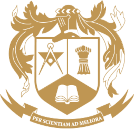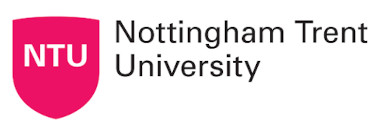Space & STEM Education Ecosystem
Bridging the skills gap. AmbaSat provides flight-hardware experience to universities, colleges, and schools, training the next generation of UK space engineers
The AmbaSat-1 Development Kit
The same hardware architecture used in our commercial missions, adapted for the classroom. Students learn assembly, embedded coding (C++), and RF telemetry using industry-standard tools.
Science Technology Engineering and Mathematics (STEM)
The AmbaSat course is designed to inspire individuals to explore an exciting career in space and STEM. Students will become familiar with the history of satellites, understand the basic principles of rockets, learn about engineering and electronic components, gain hands-on experience in soldering and assembling their own satellite, learn about sensors, software coding and cover the fundamentals of environmental research, collaboration, and teamwork.
Contact Us
enquiry@ambasat.com

For More Information :
The AmbaSat Course comes with ALL School and Student Resources

The AmbaSat Kit
Every student gets their own satellite kit, which includes all the component parts to build the satellite

Student Booklet
A comprehensive lesson booklet which takes students step-by-step through each of the ten lessons

Tutor Guide
A comprehensive tutor booklet which contains detailed instructions on how to deliver each lesson

Online Resources
A wealth of online resources, including a comprehensive step-by-step ‘How to’, code samples and more
AmbaSat Course Syllabus
Each lesson is between 60 and 90 minutes. Lessons are a combination of theoretical and practical. Skills covered include coding, engineering, project management, data analysis, electronics, collaboration, problem-solving, production, design, testing and more.
| Lesson | Title | Description |
|---|---|---|
| 1 | Introduction | Starting your journey into space. Assessing your space knowledge. Unpacking your satellite kit. The history of satellites. Problem solving & resilience. Developing critical thinking skills. |
| 2 | Assembly Basics & Practical | Assembly Overview. Tools needed. Health & Safety. The AmbaSat mainboard, schematic, electronics components - resistors, capacitors, microcontroller, radio transceiver & communication. Practice soldering. |
| 3 | The Sensor Range | CO2, UV, GPS, Temperature, Humidity, TVOC, Gas, Ambient Light. What each sensor does. Student choice of sensor. Written reasons for choosing. Develop outline mission experiments and goals |
| 4 | Assembly | AmbaSat Kit practical: Main AmbaSat board assembly soldering. Adding the programming pins. Using a multimeter to circuit test. |
| 5 | Introduction to Coding | Visual coding with online examples. Using Visual Studio Code. Connecting the satellite to the computer. |
| 6 | Continued Coding | Getting the AmbaSat onboard LED flashing – coding and programming working. Coding the sensor. LoRaWAN communications. |
| 7 | The AmbaSat Dashboard - Data Analysis | First data from your satellite & Dashboard viewing. Steps to export data. Application of the sensor’s data & it's relevance. Viewing and analysing the data, such as CO2 (global warming), infra-red and UV (solar activity) |
| 8 | Rocket Science | Rocket theory: rocket stages, centre of gravity, centre of pressure. How to calculate. Preparing for launch |
| 9 | Creating the ‘Pitch’ | Using a supplied template, prepare your ‘pitch’ to be delivered in the final lesson |
| 10 | End of Course Competition and Pitch | Create your ‘pitch deck’. Present your mission and talk about why you chose your sensor and what your space mission will achieve. 2 minutes to pitch. Winners are awarded a rocket launch slot for their satellite on an “AmbaSat Launcher” into Low Earth Orbit. |
The AmbaSat Satellite Kit

Your ticket to SPACE
Low Earth Orbit. One month in space. Tweet, record, analyse. It’s your spacecraft. You built it.

Step-By-Step Assembly
No prior knowledge is needed. Assemble, code and boom! Your AmbaSat is ready for Low Earth Orbit.

The ROCKET launch
On the day: LIVE video feed of your AmbaSat launching into space. Telemetry data to your DASHBOARD.
Course Learning Outcomes
Your students will be inspired to study and enjoy STEM subjects in preparation for a career in space and other high technology industries such as artificial intelligence and machine learning.
| Lesson | Outcomes | Notes/Materials/Video | Syllabus Relevance |
|---|---|---|---|
| 1 | Problem solving & resilience. Developing critical thinking skills. Use of online sources | This lesson presents the AmbaSat concept and assesses the student’s existing knowledge of space, engineering & computing | Career pathways Links to the curriculum subjects |
| 2 | Health & Safety understanding. Develop soldering skills | Video presentation starting with a soldering tutorial with the opportunity to pause and rewind when necessary | D&T Electronics |
| 3 | Sensor understanding & choice of sensor | Presenting the range of sensors, what each does, impact on the environment. Students describe their thoughts and reasons for their chosen sensor | Impact of activity on the planet (Geography / Physics) |
| 4 | Teamwork, problem solving, practical skills development | Video presentation with main AmbaSat board assembly, followed by practical satellite assembly | D&T Electronics, physics |
| 5 | Problem solving & resilience, development of coding knowledge, interrogation of data | Understand the basics of software engineering. Coding knowledge, problem analysis and solutions, correct the mistakes | Computing & ICT, understanding complex languages |
| 6 | Further development of coding knowledge & problem solving | Video demonstrating the coding requirements, followed by a practical exercise in coding on the computer | Computing & ICT |
| 7 | Interpretation of data, presentation of data in a graphical format | Introduction to the online AmbaSat Dashboard, detailed explanation of various pieces of data available | Mathematics & Statistics, understanding complex data, graph creation. |
| 8 | Team building, critical thinking & problem solving | Theoretical understanding with video presentation – understanding the basics of rocket science, centre of gravity, centre of pressure, etc | Physics, D&T product design |
| 9 | Creativity, presentation skills, key elements of presenting | Use creativity within a software application to create a business use case and ‘pitch’ their idea | Business studies, Drama, Presentation |
| 10 | Improved confidence, experience of public speaking | Delivering the business ‘pitch’. PowerPoint / presentation software. Confidence in public speaking | Employability / Drama, presentation, and public speaking skills |
Build Your Own Space Satellite
In 10 lessons, the AmbaSat course introduces students to the world of space engineering and exploration, bringing the STEM learning journey to life in a practical and enjoyable space journey.
AmbaSat ChipSat
A tiny, powerful 35 x 35 mm computer with gyro, radio comms, and sensors.
AmbaSat 3U CubeSat
Up to 160 AmbaSats are secured within the 3U CubeSat and then launched into space.
The Dashboard
The Dashboard is your Mission Control. All sensor data arrives here from space.
The AmbaSat course includes the following items
1. The AmbaSat Space Satellite Kit
Every student gets their very own AmbaSat-1 Space Satellite Kit! Inside the kit you get: The AmbaSat-1 printed circuit board (PCB) with microcontroller, radio transceiver unit, power management circuitry, microcontroller (MCU), sensor and gyroscope. The satellite can be powered by battery (2x 1.5v AA batteries) or solar cells. The kit contains the component parts to build the satellite, plus an FTDI programmer for interfacing with a computer, a component bag plus battery case and instructions.
2. The Student Booklet
Every student gets their very own AmbaSat-1 Space Satellite Kit! Inside the kit you get: The AmbaSat-1 printed circuit board (PCB) with microcontroller, radio transceiver unit, power management circuitry, microcontroller (MCU), sensor and gyroscope. The satellite can be powered by battery (2x 1.5v AA batteries) or solar cells. The kit contains the component parts to build the satellite, plus an FTDI programmer for interfacing with a computer, a component bag plus battery case and instructions.
3. Lesson Presentation - PowerPoint
Each of the lessons includes a PowerPoint presentation which serves as the foundation guide for the tutor. Starting with the PowerPoint and used together with the tutor booklet, tutors need no prior knowledge of space, engineering, or STEM. The PowerPoint slides and companion tutor notes guide both the tutor and students through each lesson.
4. The Tutor Booklet
This is a comprehensive tutor booklet which contains detailed instructions on how to deliver each lesson, what questions to ask, the answers to those questions, external website references and helpful tips and hints.
5. YouTube Videos
Many of the lessons come supplied with detailed YouTube videos. For example, the soldering lesson contains a detailed YouTube video guide developed by the AmbaSat team which takes students through the basics of soldering. Similarly, there are YouTube videos for coding, AmbaSat introduction, rocketry and more!
6. Online Resources
The AmbaSat course also comes complete with a wealth of online resources, including a comprehensive step-by-step ‘How to’, the Visual Studio development environment, electronics and schematics, GitHub and coding, tools, the AmbaSat Dashboard, and online support forum.
Schools and Local Authorities
We work with schools and local authorities to deliver AmbaSat courses across the UK. Here are just a few of the organisations and institutes we work with.




AmbaSat course in action
The ‘Build Your Own Space Satellite’ course is designed to inspire students to study and enjoy STEM subjects in preparation for a career in space and other high technology industries such as artificial intelligence and machine learning.
Here is a small selection of pictures taken during the AmbaSat course at a number of schools and events across the UK and international.
Lesson 8 – Rocket Launch Practical!
Tees Mayor Ben Houchen visits a class
Lesson 4 – Assembly. Putting it all together
High Altitude Balloon Launch (HAB)
AmbaSat HAB flight at 35km altitude
Lesson 3 – Understanding the sensors
Lesson 2 – Assembly Basics Demonstration
Lesson 2 – Hands on assembly
SpaceCom Bremen AmbaSat Stand
AmbaSat Kits ready to be shipped
AmbaSat Team visiting Skyrora in Scotland
AmbaSat stand at BETT, London
The AmbaSat Space Satellite Course
The same hardware architecture used in our commercial missions, adapted for the classroom. Students learn assembly, embedded coding (C++), and RF telemetry using industry-standard tools.
“AmbaSat’s cutting-edge satellite kits and complimentary rocket launch programmes are delivering a truly revolutionary space, engineering, and educational solution”.
“The AmbaSat educational package comes with everything you need to deliver the 10-lesson ‘Build Your Own Space Satellite’ course”.
